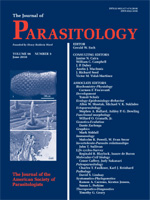Toxoplasma gondii infection may cause a variety of symptoms involving virtually all organs. Little is known of the epidemiology of T. gondii infection in different patient groups in Mexico. We sought to determine the prevalence of T. gondii infection and associated epidemiological characteristics in 472 patients in Durango, Mexico. Participants were tested for T. gondii IgG and IgM antibodies. In addition, sociodemographic, clinical, and behavioral characteristics from each participant were obtained. Seroprevalences of T. gondii IgG antibodies were found in 7 (8.2%) of 85 patients with hearing impairment, 5 (10.0%) of 50 patients with hemodialysis, 28 (12.0%) of 234 patients with visual impairment, and 7 (6.8%) of 103 at risk of immunosuppression. In total, 47 (10%) of 472 subjects had IgG T. gondii antibodies; 6 (1.3%) of them also had IgM anti–T. gondii antibodies. Patients born in Durango State had a significantly lower prevalence of T. gondii infection than patients born in other Mexican states (9.0% vs. 21.4%, respectively; P < 0.05). Multivariate analysis showed that T. gondii infection was significantly associated with consumption of undercooked meat (adjusted odds ratio [OR] = 2.95; 95% confidence interval [CI]: 1.18–7.35) or raw cow's milk (adjusted OR = 2.52; 95% CI: 1.28–4.96), presence of cats at home (adjusted OR = 2.01; 95% CI: 1.06–3.78), raising animals (adjusted OR = 2.44; 95% CI: 1.06–5.63), or eating away from home (adjusted OR = 2.70; 95% CI: 1.03–7.11). In the group of patients with visual impairment, those with reflex impairment had a significantly higher frequency of T. gondii infection than those with normal reflexes (19% vs. 9.4%, respectively: P = 0.04). Results of the present study are the first step in the design of prevention programs to avoid the sequelae of toxoplasmosis.
How to translate text using browser tools
1 June 2010
Seroepidemiology of Toxoplasma gondii Infection in Patients with Vision and Hearing Impairments, Cancer, HIV, or Undergoing Hemodialysis in Durango, Mexico
C. Alvarado-Esquivel,
O. Liesenfeld,
A. Torres-Castorena,
S. Estrada-Martínez,
J. D. Urbina-Álvarez,
M. Ramos-de la Rocha,
J. A. Márquez-Conde,
J. P. Dubey
ACCESS THE FULL ARTICLE

Journal of Parasitology
Vol. 96 • No. 3
June 2010
Vol. 96 • No. 3
June 2010




